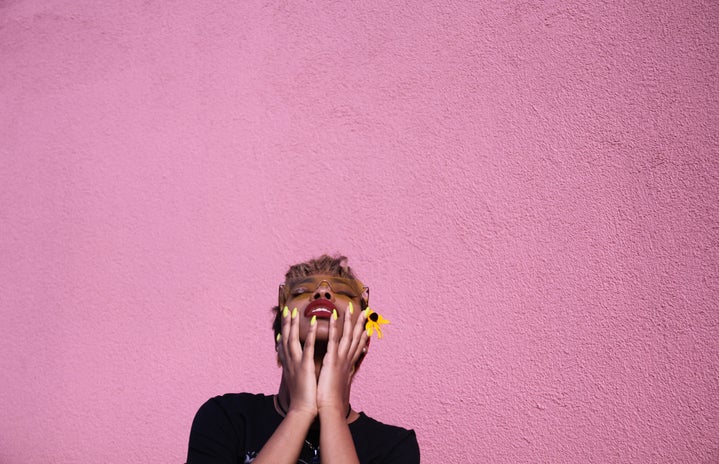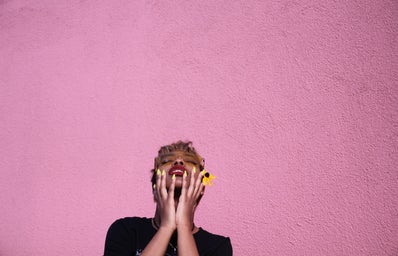As American University students transition into the minimester and start looking forward to being on campus next fall, some of us are preparing to see people in person again for the first time in a while. Fashion, which may not have mattered as much over Zoom where you can wear pajama pants most days, is now something to consider.
Like a lot of people, I’ve spent an alarming amount of time during the last few months on social media, scrolling through TikTok, Instagram and even Pinterest, looking at room decor I’ll never buy and outfits I’ll never wear, all perfectly packaged into some aesthetic or trend. Though these trendy, aesthetically pleasing “Pinterest” outfits can seem new, they are often iterations or a comeback of old styles which, in a lot of cases, have their roots in Black culture.
This won’t be a piece about cultural appropriation, because that is an entirely different story that I as a non-BIPOC writer have less authority on, but it is important to recognize that many “aesthetic” and “Pinterest” styles we see today were once labeled as “ghetto,” “unprofessional” or “tacky” when introduced and first worn by Black and Brown people.
So, as we shift our attention to clothing in the coming months, and as we reflect during Black History Month on the immense contribution the Black community has given to culture, let’s look at a few styles currently in fashion that we have Black creators and Black culture to thank for.
- Acrylic Nails
-
Acrylic nails can be dated back to Ancient Egypt, according to Nails: The Story of the Modern Manicure, where women wore artificial nails of gold, ivory, and bone. However, what we know as acrylic nails today were invented in the 50s, then popularized by and associated with Black women in the following decades.
Donyale Luna, an American supermodel and the first Black woman to have a Vogue cover, sported acrylics on her famous Twen magazine cover in 1966. In the 70s, the colorful nails of disco stars Diana Ross and Donna Summers received much attention, as did the flamboyant long extensions of famous American athlete Florence Griffith Joyner (known as Flo Jo) in the 80s, who was labeled “overly sexual” for her acrylic claws. In the 1990s we saw a popularization of elaborate artificial nails in hip-hop and R&B culture by artists like Missy Elliot and Lil Kim. And now, in 2021, acrylic nails and press-ons are as important to an outfit as any accessory.
Jonquil Lawrence explains that despite the cultural significance and history these nails have for the Black community, “Acrylics are still frequently labelled ‘tacky’, ‘cheap’ and ‘unprofessional’ when worn by a black woman” — labels that are deeply rooted in racism and classism. This stigma persists today, even as nail art trends rise in popularity and acrylics become linked to celebrities like Kylie Jenner.
It is important to note the privilege that comes with wearing fake nails as part of an aesthetic and having them be considered trendy rather than tasteless. I encourage non-BIPOC who do wear acrylics to support Black nail artists/techs as you partake in a style popularized by the Black community.
- Hoop Earrings
-
Like acrylics, hoop earrings have an ancient history and can be traced back to Mesopotamia and Ancient Egypt, where hoops were symbols of wealth and worn to “emphasize beauty.” Since then, hoop-like earrings have weaved in and out of style, solidifying their place in modern culture in the 1960s when they became a feminist symbol, especially among Black and Latina women of the feminist movement.
Hoops were a staple of the Black Power movement as many women chose to couple them with African-inspired styles. Within the Latinx community, it is tradition to receive hoops at a young age from mothers or grandmothers, and the earrings hold a special representation of heritage. Hoop earrings are central to these two communities, as a symbol of empowerment, pride and culture.
Today, hoop earrings can be seen on many women in both editorial and casual fashion, but there has been large discussion over whether they fit into the category of cultural appropriation. Because I am not in the position to decide that, I recommend that non-BIPOC who do wear hoops do so mindfully.
There is a cultural history behind these earrings, and using the word “trend” to describe them can add to the sense of disposability and erasure in how our society treats Black and Brown cultures. Again, non-BIPOC must recognize the privilege of partaking in a look without having negative connotations
- Nameplate Jewelry
-
Nameplate necklaces are often on gold chains, sporting a name in cursive front and center. As “Say My Name: Nameplate Jewelry and the Politics of Taste” explains, the style was popularized around the 1980s when it became associated with African American culture. The nameplate necklace follows the trend of Black youth in inner cities marking their presence — making their names and existence known as an act of resistance against a society that so often ignored them.
In the 90s, the style continued to be recognized as a staple in hip-hop. By the early 2000s, however, it began to be labeled the “Carrie necklace” after Sarah Jessica Parker’s iconic role in Sex and the City. In the show, Carrie Bradshaw actually refers to the necklace as her “ghetto gold,” which says everything you need to know about the double standard when it comes to fashion and who wears it.
Now it is easy to find customizable nameplate jewelry in many styles and not just the chunky, bubbly lettering style that was first associated with Black culture. As we’ve seen with acrylics and hoops, the conversation round nameplate necklaces depends on who is wearing it. When associated with Black culture, they are labeled “ghetto” and “tacky,” but when Carrie Bradshaw wears them, nameplates adopt her name and are all the rage. This is just one example of the modern gentrification of fashion.
- Sneaker Culture
-
Hip-hop culture of the 1970s revolutionized footwear in both fashion and as a form of expression. Sneakers already had an inherent appeal to Black culture: as companies started targeting the basketball shoes to non-athletes, they discovered they could link their shoes to well-known players, the majority of which were Black by the late 1960s. The combination of sports and rap made sneaker culture a huge market for Black youth, and the two became associated, though young Black men were certainly not the only people wearing them.
With the heightened visibility of the industry and rise of social media, “hypebeasts” and “sneakerheads” are flooding the market, changing what used to be a subculture into something mainstream. Some argue that the gentrification of sneaker culture has reduced its significance to the Black community. Once again, something that was once labeled as “hood” and was viewed as a sign for a potential robber by the NYPD in the ‘70s is now a cool hobby for white kids.
When discussing the commercialization of Black culture to White consumers, a quote popularized by the brand Spkng In Tongues comes to mind: “Ghetto is nothing but creativity that hasn’t been stolen yet.”
It is important to know that many of our “trends” are not new, but instead the result of evolutions of styles popularized by Black and Brown culture. The same styles that received snide looks and garnered negative labels are the ones packaged on social media as part of a cute aesthetic.
So as we do our back-to-school shopping and reenter the world from quarantine, let’s be more mindful of the origins of these fashion decisions.
Sources: 1, 2, 3, 4, 5, 6, 7, 8, 9, 10, 11, 12, 13, 14
Photos: Her Campus Media



